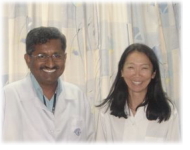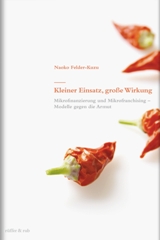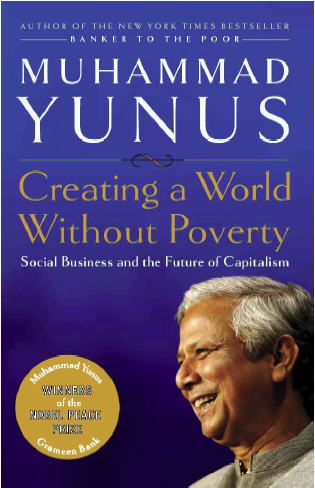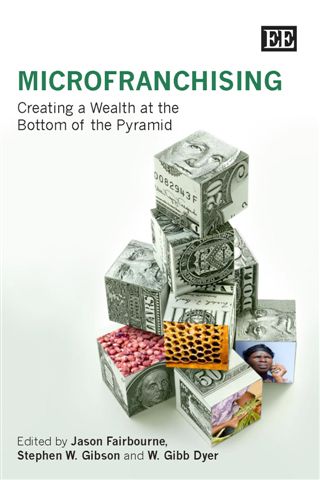A lively debate has been sparked by Mike Edward’s new book “Just Another Emperor-The Myths and Realities of Philanthrocapitalism” where he challenges the increasing use of business thinking in philanthropy and the current hype about it. It is in fact a controversial topic but certainly a healthy debate. I got to know about this topic as I follow Nextbillion where now the whole team is writing their comments on this subject.(highly recommended read). Also there is an on-line debate on this subject hosted by Global Philanthropy Forum. Here you can read comments from Matthew Bishop from the Economist who coined the word “philanthrocapitalism” and has written a book with Michael Green titled “Philanthrocapitalism: how the rich can save the world” coming out this fall.
I believe strongly that today there is a powerful movement of making the world a better place (the subject of my latest book) which has been accelerating due to the converging business (for-profit) and social (non-profit) worlds. Both worlds offer principles and methods in different areas that they ought to learn from each other. It is important to sort out what can be used most effectively from each world. I think that this is a timely debate and look forward to see the outcomes.
Category Archives: social entrepreneurship
Learning more about microfinance: training programs/field visits/conferences
Where can one go to learn more about microfinance? Is there enough capacity (trained staff and managers) to cope with the explosive growth of the microfinance industry? Of course there is no limit (only one’s own time) as to how much one can learn through the internet (ie CGAP, mixmarket, microfinance gateway or the UNDP Microfinance Distance Learning Program) but, there are also an increasing number of institutions that offer training programs around the world.
For programs/courses: Boulder Institute of Microfinance(creating a platform for dialogue and critical thinking in microfinance), Microfinance Center (programs for practitioners in Eastern and Central Europe), School of Applied Microfinance (provides 2 week training courses for MFIs in East Africa), Harvard Business School & Accion Program on Strategic Leadership for Microfinance (executive education for directors of MFIs), and Frankfurt School of Finance and Management which runs the Micro Banking Summer Academy. One excellent institution, Microfinance Management Institute (MFMI) is building a community to foster development of human resources for the microfinance industry through the creation of learning tools and programs. They also provide courses for funders as well as integrating microfinance courses into the curricula of premier graduate management programs in developing countries.
If one’s interest is to get familiar with microfinance by going to the field there are many microfinance institutions that provide visitors programs. I have visited 2 of these which were excellent. BRI in Indonesia and BRAC in Bangladesh.
For international conferences the easiest way to see these are on the website of the microcapital, the top newsletter of microfinance investments.
So don’t wait if you want to learn more about microfinance get started now!
Visit to Aravind Eye Hospital in Pondicherry, India
 On April 16th, I visited Aravind Eye Hospital in Pondicherry one of the 5 eye hospitals of Aravind Eye Care Systems (AECS). AECS was founded in 1976 by the late Dr. Venkataswamy (Dr. V) with the mission to eliminate needless blindness by providing compassionate and high quality eye care.AECS today is not only the world largest eye care facility but the world leader in eye care delivery. It encompasses 5 hospitals, a manufacturing center for ophthalmic products (Aurolab), an international research foundation (Aravind Medical Research Foundation) and a resource and training center (LAICO). During the 12 month period to March 2007 AECS treated 2.3 million outpatients and performed 270,444 surgeries. AECS is a profitable institutions although only 40% of the patients pay between US$ 50-300 for catarat surgeries while 60% are non-paying patients.
On April 16th, I visited Aravind Eye Hospital in Pondicherry one of the 5 eye hospitals of Aravind Eye Care Systems (AECS). AECS was founded in 1976 by the late Dr. Venkataswamy (Dr. V) with the mission to eliminate needless blindness by providing compassionate and high quality eye care.AECS today is not only the world largest eye care facility but the world leader in eye care delivery. It encompasses 5 hospitals, a manufacturing center for ophthalmic products (Aurolab), an international research foundation (Aravind Medical Research Foundation) and a resource and training center (LAICO). During the 12 month period to March 2007 AECS treated 2.3 million outpatients and performed 270,444 surgeries. AECS is a profitable institutions although only 40% of the patients pay between US$ 50-300 for catarat surgeries while 60% are non-paying patients.
I was taking part on Unltd Learning Journey 2008 visiting social entrepreneurs in Southern India and although this was not part of the official program it was great that I could visit one of the institutions that I respect so much and have featured in my new book (see entry below). Renjith who is a manager for out-patients organized an efficient visit so that we could have an overview of how patients (both paying and non-paying patients) were examined and treated. We also had a chance to talk to Dr. Ravindran (picture above), the Chief Medical Officer about Aravind expansion plans. Aravind is busy expanding and replicating its model due to the many inquiries and requests from many places both in India and abroad. Yunus Muhammad is opening this month the first Grameen Eye Hospital in Bangladesh modeled after the Aravind Eye Hospital.
New book: Kleiner Einsatz Grosse Wirkung (Beyond Microfinance: The Movement of Making the World a Better Place) by Naoko Felder

Starting with an update on microfinance, it covers other innovative market-oriented models such as base of the pyramid (BOP) businesses, social enterprises and microfranchises. These models together with microfinance are improving the lives of the 4 billion people living at the BOP. The last section covers in detail a remarkable example in this area, Scojo Foundation. Scojo is developing the market for affordable reading glasses at the BOP through microfranchising.The book provides the author’s insights on 1) how the business (for-profit) and social (non-profit) worlds have been converging, setting the stage for these new models to emerge, 2) how these models, the people behind them, and the advent of Web 2.0, are creating a strong and positive movement towards a more responsible, sustainable and kinder world and 3) how all of us could make a difference.The book has been published in German language by rueffer and rub with the title >Kleiner Einsatz Grosse Wirkung. (Small input, big impact – thus,the red chilis of the cover) This book illustrates a giga trend, the powerful movement of making the world a better place.
2008 Skoll Forum Highlights
The 5th Skoll World Forum for Social Entrepreneurship took place last week in Oxford. This powerful, inspiring forum led by Jeff Skoll and Sally Osberg celebrates and connects social entrepreneurs to the world and is making “social entrepreneurship” known to governments as well as businesses. This year’s highlights were the speeches of Lord Anthony Giddens (climate change: opening plenary) former President Jimmy Carter (keynote: Skoll Awards Ceremony) and Paul Farmer and Al Gore (both in the closing plenary). There were 11 Skoll Awards given out this year and Kiva (Matt Flannery and Permal Shah) was one of them. This was the second year in the row that I attended Skoll Forum and it is an awesome experience to be 3 days in a place where you see over 700 people trying to make a world a better place. One of the ventures that I was very impressed about is E+Co which empowers local enterprises in developing countries by providing business services and financing so that these enterprises can deliver clean and affordable energy to households, businesses and communities. There are several sessions that are covered by video and are all highly recommended.
Goldman Sachs to invest in business/management education of 10,000 women
Goldman Sachs launched last week 10,000 WOMEN, an amazing initiative that will deliver business and management education to 10,000 underserved women predominantly in developing and emerging markets. Goldman Sachs will commit $100 million over the next 5 years (in addition to the time and expertise that the GS people will be dedicating on mentoring) to this initiative supporting partnerships between universities in the U.S. and Europe and business schools in emerging and developing economies. The initial partnerships are working on pragmatic, flexible and short term programs resulting in business and management certificates. Brown,Columbia, Harvard, Stanford, Cambridge, University of Michigan, and Wharton have already initiated academic partnerships with business schools in Africa and the Middle East for this program.
The initiative has two goals: increasing the number of underserved women receiving a business/management education and improving the quality and capacity of business/management education around the world. Expanding the entrepreneurial talent and managerial pool in developing and emerging economies -especially among women- is one of the most important means to reducing enequality and ensuring more shared economic growth. (Executive Summary)
It is a remarkable initiative addressing effectively one of the most difficult obstacles for sustainable economic growth. The initiative will provide many microentrepreneurs with the much needed business/management skills that would enable them to build and expand their businesses and thus, contribute significantly to the economic growth of their countries.
10,000 Women Fact Sheet
Press release
Book:Creating a World Without Poverty: Social Business and the Future of Capitalism by Yunus Muhammad
 Muhammad Yunus, Nobel Peace Price winner, in his continuing fight to make poverty history promotes a new type of enterprise which has as its objective to make a difference. These social business enterprises will be self sustainable, in his words “no loss, no dividend enterprises”. He refers to two types of such enterprises one having investors like the latest joint venture between Grameen and Danone, an enterprise providing fortified yoghurt to malnourished children. Investors will get their capital back, but, profits will be injected back to the company to continue to achieve its objective. The second type of social business enterprise is a for-profit model but owned by the poor such as Grameen Bank.This book goes in depth explaining his “Next Big Idea” social businesses and also present some ideas on how corporations and individuals can take part in achieving a “world without poverty”. It is inspirational and of course uplifting. Highly recommended. Past related entry on this topic, “Muhammad Yunus promotes social businesses”http://www.microfinance.ws/microfinance/2006/12/
Muhammad Yunus, Nobel Peace Price winner, in his continuing fight to make poverty history promotes a new type of enterprise which has as its objective to make a difference. These social business enterprises will be self sustainable, in his words “no loss, no dividend enterprises”. He refers to two types of such enterprises one having investors like the latest joint venture between Grameen and Danone, an enterprise providing fortified yoghurt to malnourished children. Investors will get their capital back, but, profits will be injected back to the company to continue to achieve its objective. The second type of social business enterprise is a for-profit model but owned by the poor such as Grameen Bank.This book goes in depth explaining his “Next Big Idea” social businesses and also present some ideas on how corporations and individuals can take part in achieving a “world without poverty”. It is inspirational and of course uplifting. Highly recommended. Past related entry on this topic, “Muhammad Yunus promotes social businesses”http://www.microfinance.ws/microfinance/2006/12/
Bill Gates Calls for “Creative Capitalism”
On January 24th at the WEF in Davos, Bill Gates made a call on “creative capitalism” a new system that “would have a twin mission: making profits and also improving lives for those who don’t fully benefit from market forces.” He pointed out that “To make the system sustainable, we need to use profit incentives whenever we can. At the same time, profits are not always possible when business tries to serve the very poor. In such cases there needs to be another market incentive- and that incentive is recognition… In markets where profits are not possible, recognition is a proxy; where profits are possible, recognition is an added incentive.The challenge is to design a system where market incentives including profits and recognition, drive the change” He cited examples like Bono’s RED Campaign which has generated in 18 months $50mn for the Global Fund to Fitght AIDS TB and Malaria, a Dutch company which holds the rights to a cholera vaccine that retains the rights in the developed world but shares those rights with manufacturers in the developing world, and a new law in the USA whereby drug companies that develop a new treatment for a neglected disease like malaria or TB can get a priority review from the FDA for another product they have made. He called on businesses, governments and the non-profit world on to take up on projects that works both to generate profit and solve the world’s inequities.
This is a great call on what is also referred as BOP businesses and “double or triple bottom line businesses” and the work done by many social entrepreneurs. The new name is good and easy to understand. The best part is the potential impact of this call as it comes from one of the most powerful business leaders and one of the most influential philanthropist of today. The webcast of this speech is available from the WEF site.
Nobel Peace Prize 2007-a tribute to Jeff Skoll’s vision
The 2007 Nobel Peace Prize was awarded to Al Gore and to the UN climate panel (IPCC)
“for their efforts to build up and disseminate greater knowledge about man-made climate change, and to lay the foundations for the measures that are needed to counteract such change”
The impact of the movie “An Inconvenient Truth” has been spectacular changing the debate of climate change and raising awareness of the urgency of this subject worldwide in a very short period of time. The movie has become mandatory viewing in schools in Engand, Scotland and many countries in Scandinavia. We should pay tribute also to the person who made it possible for Al Gore’s message to be disseminated in such an efficient way by making it into a movie and promoting it. Jeff Skoll, philanthropist, social entrepreneur, founder and Chairman of Skoll Foundation and the independent movie company Participant Productions was the key person behind this. Thank you Jeff and congratulations!
The book “MicroFranchising”
 MICROFRANCHISING: Creating Wealth at the Bottom of the Pyramid, the first major publication on this subject, is now available. (Edward Elgar Publishing). This edited volume comprising 13 chapters and 18 authors introduces the concept of microfranchising and discusses how this business model can be effectively used for poverty alleviation. Different models of microfranchising are reviewed and specific case studies are highlighted to show how it has worked and is working in different parts of the world. Also the advantages as well as potential problems and pitfalls of microfranchising are discussed. My contribution was on the subject of “Microfranchise Funding” (Chapter 12).
MICROFRANCHISING: Creating Wealth at the Bottom of the Pyramid, the first major publication on this subject, is now available. (Edward Elgar Publishing). This edited volume comprising 13 chapters and 18 authors introduces the concept of microfranchising and discusses how this business model can be effectively used for poverty alleviation. Different models of microfranchising are reviewed and specific case studies are highlighted to show how it has worked and is working in different parts of the world. Also the advantages as well as potential problems and pitfalls of microfranchising are discussed. My contribution was on the subject of “Microfranchise Funding” (Chapter 12).
If there is one thing I could hope for is that the price for this book would be a bit lower so more people can afford to buy it and read it.
